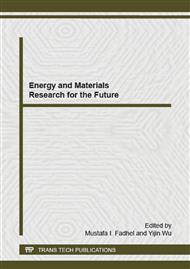p.188
p.193
p.199
p.205
p.211
p.217
p.222
p.228
p.233
Modification on ITO to Fabricate Low Work Function Electrode in Inverted Organic Photovoltaics
Abstract:
The PCE has a great relationship with the work function of conductors in organic and printed electronics devices. And organic photovoltaics require an electrode with a work function (WF) that is low enough to either facilitate the transport of electrons in and out of various optoelectronic devices or collect electrons from the lowest unoccupied molecular orbital (LUMO) of a given organic semiconductor. In inverted organic photovoltaics, the ITO is normally used as cathode to collect electrons .By using PDDA deposition, the surface work function of ITO can be decreased by 0.3 eV, which is able to improve the electrons transport and the PCE in OPV, as it has been proved that the surface electronic potential of ITO is very sensitive to the presence of self-assembled molecular layers.
Info:
Periodical:
Pages:
211-214
Citation:
Online since:
February 2015
Keywords:
Price:
Сopyright:
© 2015 Trans Tech Publications Ltd. All Rights Reserved
Share:
Citation:


